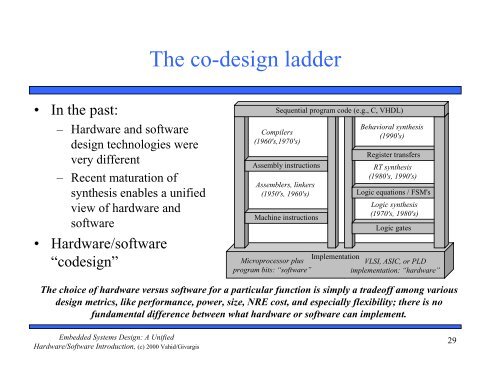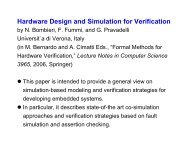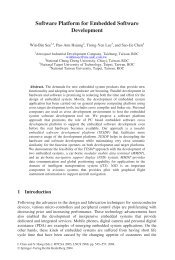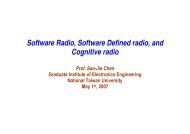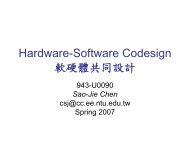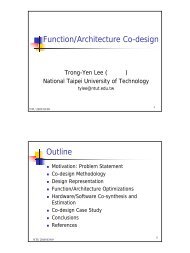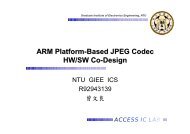Hardware/Software Introduction Chapter 1 Introduction
Embedded Systems Design: A Unified Hardware/Software ... - EET
Embedded Systems Design: A Unified Hardware/Software ... - EET
Create successful ePaper yourself
Turn your PDF publications into a flip-book with our unique Google optimized e-Paper software.
The co-design ladder<br />
• In the past:<br />
– <strong>Hardware</strong> and software<br />
design technologies were<br />
very different<br />
– Recent maturation of<br />
synthesis enables a unified<br />
view of hardware and<br />
software<br />
• <strong>Hardware</strong>/software<br />
“codesign”<br />
Compilers<br />
(1960's,1970's)<br />
Assembly instructions<br />
Assemblers, linkers<br />
(1950's, 1960's)<br />
Machine instructions<br />
Microprocessor plus<br />
program bits: “software”<br />
Sequential program code (e.g., C, VHDL)<br />
Implementation<br />
Behavioral synthesis<br />
(1990's)<br />
Register transfers<br />
RT synthesis<br />
(1980's, 1990's)<br />
Logic equations / FSM's<br />
Logic synthesis<br />
(1970's, 1980's)<br />
Logic gates<br />
VLSI, ASIC, or PLD<br />
implementation: “hardware”<br />
The choice of hardware versus software for a particular function is simply a tradeoff among various<br />
design metrics, like performance, power, size, NRE cost, and especially flexibility; there is no<br />
fundamental difference between what hardware or software can implement.<br />
Embedded Systems Design: A Unified<br />
<strong>Hardware</strong>/<strong>Software</strong> <strong>Introduction</strong>, (c) 2000 Vahid/Givargis<br />
29


